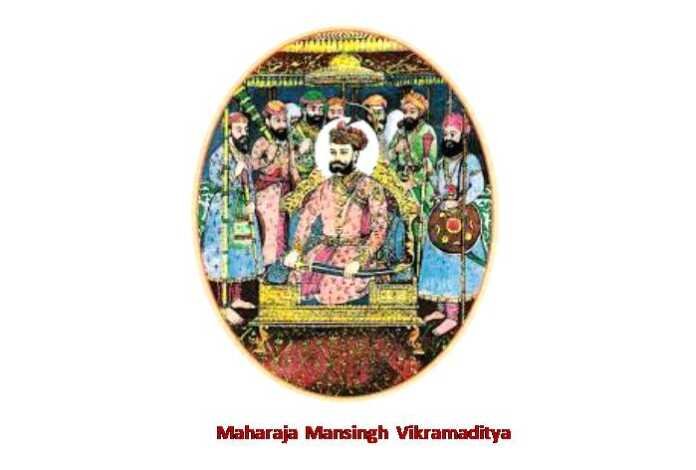Maharaja Mansingh Vikramaditya was a famous Rajput ruler of Tomar clan of Madhyapradesh. He was a independent maharaja of Gwalior and contemporary to Maharana Sanga. A part of Rajasthan was also under Mansingh’s rule.
Khandar town is situated in Sawai Madhopur district of Rajasthan. Five stone inscriptions were found in Khandar in early sixties of 20th century. These stone inscriptions were located at the step ascent of the hill of the Khandar fort on the village side. These stone inscriptions are the solid proof of reign of Tomar ruler of Gwalior.
Three inscriptions are incised on the first rock, measuring 20×8 sq. ft. and remaining the last one is incised on a white stone slab measuring 20X8 sq. ft., fourth inscription incised on the second rock, measuring 15×7 suring 23 x 14 sq. inches.
First inscription of the first rock, bearing the date V.S. 1230, states merely the foundation of Jain devasthan by the two disciples of Sagarsen.
Second inscription, bearing the date V. S. 1568,Asvin Sudi 1, Thursday,And the third inscription, bearing the date V.S. 1568, Kunwar Vadi 3, Wednesday, of the first rock, under reference, and the white stone slab inscription V.S. 1568, Phalgun vadi 3, Wednesday, refer Man Sing, the king of Gwalior who ruled from 1486-1517 A.D. as ‘maharajadhiraj’, and Salhadi, contemporary to Rana Sanga and Babar, as ‘Maharaja’. This reference proves the suzerainty of Gwalior rulers in this part of Rajasthan.
The stone slab inscription rather mentions the name of ‘Gopachalgadh’, the old name for the present ‘Gwalior’. Simultaneously it gives us the impression that Salhadi was the feudal chief of Man Singh.
The inscription of the second rock, bearing the date V.S. 1574, Vaisakh sudi 5, Sunday, mentions Vikramaditya as maharajadhiraj, who succeeded his father Man Singh in V.S. 1574. It does not refer ‘Salhadi’.
It indicates that Salhadi could not enjoy the confidence of Vikramaditya which forced him to leave Khandar. It proves, further, the date 1517A. D. when he became A virtually independent chief of Raisen Bhilsa and Sarangpur after leaving Khandar.




